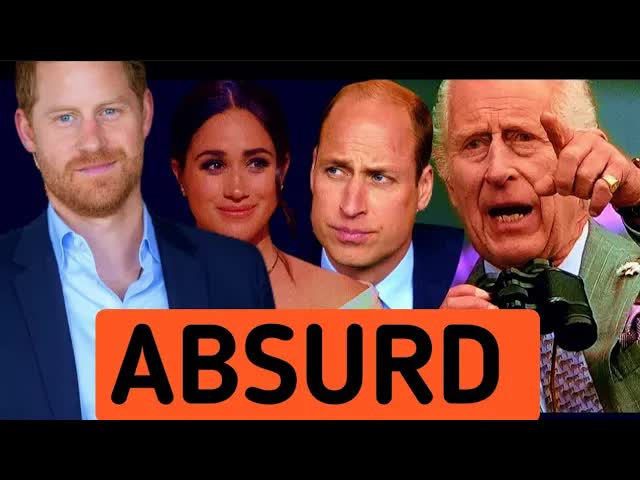In a curious twist of media fascination, the UK press seems to have developed an almost obsessive fixation on Prince Harry and Meghan Markle, the Duke and Duchess of Sussex.
This relentless scrutiny raises eyebrows, especially when one considers the glaring lack of coverage afforded to other members of the British royal family.
It’s a tale that’s as baffling as it is revealing, highlighting a peculiar imbalance in journalistic priorities.
The media’s obsession with the Sussexes has escalated to a point where it borders on the absurd.
Every detail of their lives—be it their recent relocation to the United States or their various business endeavors—has been dissected and analyzed ad nauseam.
It appears that journalists have become so engrossed in the couple’s affairs that they speculate about everything from tax implications to inheritance issues, as if they possess insider knowledge of the couple’s financial dealings.
Yet, when we shift our focus to other royals, particularly Kate Middleton, the Princess of Wales, the media’s interest seems to vanish.
In a striking example, Kate’s recent battle with cancer has barely registered a blip on the media radar.
One might wonder how a significant health crisis can be overlooked while the press feverishly dissects the minutiae of Harry and Meghan’s lives.
It’s as if the media has chosen to ignore the human element in favor of sensationalism.
This inconsistency in reporting is not just puzzling; it raises important questions about the motivations driving such selective coverage.
Why does the media cling to the Sussexes while turning a blind eye to pressing matters affecting other royals?
Is it merely a case of public fascination, or is there something more insidious at play?
The contrast is stark.
Journalists seem to have an insatiable appetite for any scrap of information related to Harry and Meghan, yet they appear utterly disinterested when it comes to covering the health struggles of someone like Kate Middleton.
The silence surrounding her diagnosis is deafening, especially compared to the cacophony of speculation surrounding the Sussexes.
It’s as if the media has developed a kind of selective myopia, unable to see beyond the drama that plays out across the Atlantic.
What’s more troubling is the implication of this biased coverage.
The media’s focus on controversy over compassion not only misleads the public but also shapes perceptions in a way that prioritizes sensational stories over those that truly matter.
This trend could erode journalistic integrity, leading to a landscape where certain narratives are elevated simply because they attract clicks.
One must consider the possible reasons behind this bias.
The Sussexes’ departure from royal life was undeniably controversial, and controversy sells.
On the flip side, Kate’s health battle is tragic but lacks the same dramatic flair.
The media thrives on conflict, and the narrative of rebellious royals is far more enticing than the somber realities faced by those still within the royal framework.
As we examine this phenomenon, it becomes clear that the issue extends beyond mere poor journalism.
It reflects a broader problem within the media landscape, where bias can overshadow balanced reporting.
Imagine a scale tipped heavily towards one side, with the Sussexes’ every move meticulously chronicled while the struggles of the Princess of Wales are relegated to the background.
This disparity in coverage serves as a mirror to the state of journalism today, urging a need for a more equitable approach.
The media should strive to highlight all stories, not just those that promise the most sensational headlines.
The power to shape public perception is immense, and with that comes the responsibility to report fairly and accurately.
So, as you navigate through the headlines, remember that there’s much more to the royal family than just the antics of Harry and Meghan.
The media’s selective scrutiny calls for a reevaluation of what stories deserve attention and why.
It’s time for a media landscape that values depth and diversity over drama.
